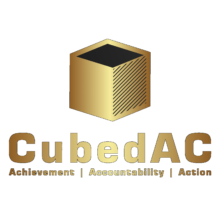2025 Business Planning in Today’s Environment
As the business landscape accelerates toward a new era, 2025 business planning emerges as a critical step in guiding your company’s future. With economic conditions shifting, technology advancing, and customer expectations evolving, having a comprehensive plan is no longer optional—it’s essential. For service-based businesses like house painting, landscaping, house cleaning, and HVAC, the upcoming year offers unique opportunities to refine operations, adopt innovative tools, and stand apart from the competition.

At CubedAC, we understand the challenges these industries face. Painting contractors grapple with seasonal demand, landscapers encounter fluctuating project scopes, house cleaners must retain loyal, recurring clients, and HVAC professionals strive to stay ahead of energy-efficient upgrades and smart-home integrations. Crafting a strategic 2025 business planning approach ensures each of these businesses can leverage best practices, anticipate market trends, and maintain a loyal customer base.
By proactively setting goals, honing your brand’s identity, and investing in tools that streamline operations, you pave the way for long-term resilience. From optimizing pricing strategies for your house painting services to enhancing digital marketing campaigns for your landscaping or house cleaning operations, the right plan can transform your growth trajectory in 2025 and beyond.
Why 2025 Business Planning Matters
In an era where customer demands shift rapidly, having a roadmap for 2025 business planning keeps you one step ahead. This approach isn’t just about predicting trends—it’s about preparing your business to adapt seamlessly when changes occur. Consider these core reasons why investing time, effort, and resources into your 2025 plan is crucial:

1. Embracing Market Shifts
Each service industry faces distinct market dynamics. For example, house painting business consulting often reveals that residential customers are increasingly seeking eco-friendly, low-VOC paints and swift turnaround times. Meanwhile, landscaping clients may prioritize sustainable solutions and drought-tolerant designs. House cleaning clients may value convenience and contactless billing options, and HVAC customers may look to energy-efficient upgrades or smart thermostats. A solid 2025 business planning strategy incorporates such insights, helping you tailor services to evolving consumer interests.
2. Accelerating Technology Integration
Technology will continue to reshape the service sector in 2025. Painting contractors might use estimating software, such as PaintScout, to provide accurate quotes and manage projects more effectively. Landscapers can leverage fleet management tools, while HVAC specialists might integrate IoT devices to track performance in real-time. For house cleaning businesses, automated scheduling systems and CRM software streamline client communication. By weaving tech adoption into your 2025 business planning, you ensure smoother operations. You also ensure better data insights, and a superior customer experience.
3. Sustaining Long-Term Profitability
A forward-looking plan establishes measurable financial targets. This might mean re-evaluating your pricing model for painting jobs, introducing packages for year-round landscaping services, or for HVAC maintenance. With detailed financial forecasting, you’ll know when to adjust marketing spend, invest in employee training, or negotiate better supplier contracts. Over time, this strategic financial approach reduces waste, enhances profitability, and fosters stability—no matter the market conditions.
4. Establishing a Strong Brand Presence
Customers gravitate toward brands that communicate value and authenticity. Through 2025 business planning, you can differentiate your business by clarifying your brand message. You can also stand out by updating your logo, or improving online reputation management. For instance, contractors may highlight their use of high-quality, eco-friendly materials, while landscapers might emphasize their expertise in sustainable design. HVAC and house cleaning companies can spotlight exceptional service guarantees and responsive customer care. A well-defined brand built into your plan resonates with clients and sets you apart from the crowd.
Developing Your 2025 Business Planning Framework

With a clear understanding of why 2025 business planning is essential, the next step is to create a workable framework. Think of this as the architecture supporting your goals, ensuring that each element is aligned and actionable. Consider the following detailed steps when developing your plan:
1. Set Clear, Measurable Goals
Start by defining what success will look like in December 2025. Will your painting business have expanded into new neighborhoods? Are you aiming to boost your landscaping company’s revenue by 30%? Perhaps your house cleaning service wants to add commercial clients, or your HVAC firm plans to introduce a new maintenance subscription model. Translate these ambitions into specific, measurable goals. Instead of “improve sales,” say “increase quarterly sales by 15% through targeted marketing campaigns and referral incentives.”
Tip: Breaking down larger goals into quarterly or monthly milestones makes them more manageable. For a house painting company, Q1 might focus on enhancing the online booking system, while Q2 might revolve around adding a new service line, such as kitchen cabinet refinishing.
2. Conduct In-Depth Market Research
Your 2025 business planning should be rooted in a thorough understanding of industry trends. For house painters, research might reveal a growing homeowner preference for interior painting during winter months—an ideal opportunity to offer off-season discounts. Landscapers can examine rising interest in native, pollinator-friendly gardens, while house cleaning businesses might notice customers value green cleaning products and flexible scheduling. HVAC firms could discover a spike in demand for heat pump installations as energy efficiency becomes a priority.
Integrate these findings by adjusting your service offerings, marketing messages, and operational strategies. Resources like CubedAC’s landscaping business consulting pages or external industry reports from sources like SCORE and Harvard Business Review can bolster your market insights.
3. Analyze the Competition
A robust 2025 business planning framework involves understanding what your competitors are doing. For instance, if you run a house cleaning service and notice a competitor gaining market share by offering online booking and same-day cleaning, consider adopting similar or superior features. Painting businesses might find that introducing project management software or improving their estimates can outshine a rival’s slower quoting process. Landscapers who identify a niche—like premium holiday light installations—can outpace those sticking solely to mowing and pruning services.
By identifying gaps, strengths, and vulnerabilities among competitors, you can craft a plan that ensures your business outperforms them in quality, convenience, or cost-effectiveness.
4. Create a Financial Blueprint
Financial stability forms the backbone of your 2025 business planning. Start by reviewing your previous two to three years of financial data and projecting revenues, expenses, and profit margins for 2025. Consider seasonal fluctuations—landscapers may see a drop in winter work, while painters might capitalize on interior projects during colder months. House cleaners may enjoy steady year-round demand, and HVAC companies can predict maintenance check surges in spring and autumn.
Set aside funds for marketing initiatives, training programs, and tech investments. This might mean budgeting for a CRM upgrade that improves client follow-up or factoring in the cost of new painting equipment that reduces project time by 20%. Periodically review and revise these financial plans to reflect changing market conditions.
5. Outline Actionable Strategies
With your goals, research, competitive analysis, and financial forecast in place, break down your plan into tangible tasks. For example:
- Marketing: Launch an SEO campaign to improve local search rankings, or use social media ads to showcase landscaping projects or house painting transformations.
- Operations: Implement a new scheduling tool that streamlines HVAC service calls, reducing downtime and travel costs.
- Training & Development: Offer online courses for house cleaners to learn eco-friendly techniques or provide painting crews with advanced safety training.
Ensure that each strategy directly supports one or more of your primary 2025 goals. Assign responsibilities to team members, set realistic deadlines, and develop key performance indicators (KPIs) to gauge success.
Key Elements of Effective 2025 Business Planning

Once you’ve established a solid framework, your 2025 business planning efforts must translate into actionable strategies across critical business functions. From refining your marketing approach to streamlining day-to-day operations and strengthening financial health, each element plays a vital role in achieving sustainable growth. Consider how you can adapt these strategies whether you run a painting business looking to optimize lead generation, a landscaping company ready to scale, a house cleaning service seeking repeat clients, or an HVAC firm eager to leverage smart technologies.
2025 Business Planning for Marketing and Branding
In 2025, digital marketing will continue to define how businesses interact with customers. Service-based companies must rise to meet customers where they are—online, on mobile devices, and engaging with brands that demonstrate credibility and authenticity.
- SEO and Local Search Optimization: For painting companies, incorporating location-based keywords like “exterior painting services” ensures you appear in local search results. Take advantage of industry-specific SEO tactics with guidance from articles like Online Marketing for Painting Companies or consider implementing SEO strategies to boost your painter marketing efforts.
- Social Media Marketing and Visual Content: Platforms like Instagram or Pinterest are ideal for showcasing before-and-after photos of painting or landscaping projects. For inspiration, check out our tips on Instagram Marketing for Painters.
- Content Marketing and Thought Leadership: Building trust through valuable content—like blog posts, guides, and eBooks—positions your brand as an authority. Landscaping companies might share seasonal lawn care tips, while HVAC businesses can publish FAQs about energy-saving upgrades.
- Customer Reviews and Testimonials: Direct potential clients to your Testimonials Page to showcase social proof. Positive reviews reassure new customers and differentiate you from competitors who lack a strong client endorsement base.
By weaving these marketing and branding elements into your 2025 business planning, you ensure your brand stands out, resonates with your target audience, and fosters long-term loyalty.
2025 Business Planning for Operational Efficiency
Efficient operations are the backbone of profitability and client satisfaction. Even the strongest marketing strategy won’t deliver sustainable results if your business struggles with scheduling, inventory management, or communication bottlenecks.

- Workflow Automation and Technology Adoption: Implementing painting industry-specific software like PaintScout simplifies estimating and project management. Landscaping businesses might use GPS tracking for equipment, while house cleaning companies benefit from automated booking systems. For broader guidance, review our Implementing Technology in Your Painting Business article to understand how the right tools streamline operations.
- Employee Training and Retention: Skilled, motivated employees drive success. Consider specialized training modules, like our House Painting Business Training program, or invest in leadership development for supervisors. Regular coaching helps your crew deliver consistent, high-quality results, reducing turnover and enhancing client satisfaction.
- Supplier and Vendor Management: Strong relationships with suppliers ensure you receive materials on time and at competitive prices. For landscapers, this might mean securing seasonal contracts for mulch or plant materials; for HVAC technicians, consistent supplier support ensures you’re never short of crucial parts during peak seasons.
By integrating these operational enhancements into your 2025 business planning, you pave the way for smoother workflows, happier employees, and ultimately, a better customer experience.
2025 Business Planning for Financial Stability
Financial stability underpins every growth strategy. A steady cash flow ensures you can invest in marketing initiatives, employee training, and new technologies without jeopardizing the health of your business.

- Pricing Strategies and Profit Margins: Regularly evaluate your pricing to reflect market changes, seasonal demands, and service improvements. For painting companies, consider seasonal promotions outlined in our Winter Marketing Tips for Painters article, or explore premium pricing for specialized services.
- Cost Reduction and Efficiency: Identify areas to reduce overhead without compromising quality. For a house cleaning company, this might mean optimizing travel routes between appointments; HVAC businesses could invest in energy-saving diagnostic tools to reduce labor costs on long service calls.
- Cash Flow Management and Budgeting: Plan budgets for marketing campaigns, new equipment purchases, and employee training sessions. Our Services Page offers a range of consulting options to help you map out a realistic financial blueprint that withstands market fluctuations.
Incorporating robust financial strategies into your 2025 business planning ensures you maintain the liquidity and confidence to seize new opportunities as they arise.
Actionable Steps to Implement Your 2025 Business Planning
Even the most well-researched plan must translate into daily actions. Assign tasks to team members and set clear timelines:

- Create a Timeline: Divide the year into quarters, assigning marketing campaigns to Q1, operational improvements to Q2, and technology upgrades to Q3, for instance.
- Assign Responsibilities: Ensure each member of your team knows their role. Painting project managers handle supplier relations, landscapers oversee labor scheduling, house cleaning supervisors track customer satisfaction, and HVAC technicians consult with vendors on new equipment.
- Track KPIs: Monitor key metrics like lead conversion rates, client retention, average project duration, and net profit margins. Tools and resources—such as Business Consulting Services from CubedAC—can provide guidance on setting and analyzing these indicators.
- Regular Review and Adjustment: Treat your 2025 business planning document as a living roadmap. Market trends shift; what worked in Q1 may need tweaking by Q3. Revisit your plan quarterly, adjust pricing, update marketing approaches, or incorporate feedback from team members and clients.
Example: A house cleaning business might set a Q1 goal to launch referral discounts, introduce online scheduling in Q2, focus on rebranding and a new logo design in Q3, and add eco-friendly cleaning packages by Q4. Each step builds upon the last, fostering steady, manageable growth.
Additional Resources for 2025 Business Planning

To further refine your strategies, tap into the wealth of information and support available online and through professional consulting:
- CubedAC Internal Guides:
- External Insights:
Whether you’re considering new marketing channels, implementing advanced technologies, or reassessing your pricing models, these resources enhance your 2025 business planning efforts, ensuring that every decision you make is backed by expert insight and proven methodologies.
FAQs
Q1: Why is 2025 business planning important for service-based businesses?
2025 business planning prepares your company to adapt to evolving market trends, leverage new technologies, and maintain a competitive edge, ensuring sustained growth.
Q2: How can I incorporate technology into my 2025 business planning?
Integrate CRMs, scheduling apps, and industry-specific tools like PaintScout for painters or IoT-enabled HVAC diagnostics. For more guidance, see our Implementing Technology in Your Painting Business article.
Q3: Can 2025 business planning help a small house cleaning company?
Absolutely. By setting clear goals, optimizing pricing, improving operations with automated scheduling, and investing in marketing, even small house cleaning companies can maximize profitability and client satisfaction.
Q4: How often should I review my 2025 business plan?
Review at least quarterly. Frequent evaluations allow you to adapt to changing market conditions and stay aligned with your growth targets.
